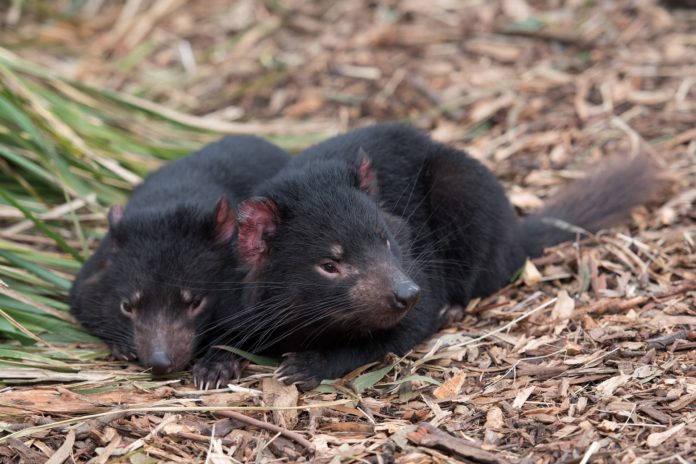A contagious facial cancer has been decimating Tasmanian devil populations since 1996. By 2015, 95 percent had died of the disease.
But this type of transmissible cancer is extremely rare, and the genes that enable it could actually inspire stem cell therapies for humans that reduce the threat of cancer development.
Stem cells have the potential to provide real cures for diseases where we currently can only treat symptoms. That’s because they have the potential to become any cell type that needs to be replaced, from insulin-producing cells that could cure diabetes, to light-sensing cells that could restore vision.
However, stem cells also have the potential to transform into cancer cells.
Researchers at the University of Toronto’s Medicine by Design program developed “safe cells” using gene editing – ones that pair a suicide gene with a cell division gene that is needed for survival. If a harmful mutation that could lead to cancer is detected, a drug can be given to kill off the transplanted cells.
The study was published in Nature.
Contagious cancer inspires cloaked stem cell transplant
Lifelong immunosuppression is normally needed whenever foreign cells or organs are transplanted. To avoid this, the team switched off the genes that need to be deactivated to provide the cloaking abilities of the Tasmanian devil’s facial cancer.
“What I found interesting about the Tasmanian devil’s cancer is that the tumour cells were not being recognized by the immune system of the bitten animal, so they were not rejected, and the tumour was able to grow,” lead author Andras Nagy said in an interview with Medicine by Design’s Lisa Willemse.
“The transmission between animals was essentially a cell graft, and it told us that it was possible to introduce cells that would not be recognized by the host immune system.”
A lot of research has also gone into re-programming adult skin cells into stem cells, providing a way to make stem cells from a patient’s own cells. The resulting cells are also called induced pluripotent stem cells or iPS cells, and they avoid immunosuppression because they are a perfect donor match. But cell cloaking would provide a pathway for off-the-shelf cell therapies that would be more cost effective.
There’s risk in numbers, but how much is too much?
“Moving a cell therapy from the lab to the clinic requires answering two important questions: Does it work? And is it safe?” explains Nagy.
The more cells that are needed, the higher the risk. Each time that cells divide, a new copy of all their genes is written, and there’s a possibility for errors. Those errors can ultimately add up to cancer, and cloaked cells would evade immune recognition.
That’s why the addition of a suicide gene is so important, but even that fail-safe can fail.
“There is the possibility that mutations could kill the suicide gene but leave the cell division gene unharmed. But we can calculate the probability of this mutation happening, and this is how the safe cell level is generated.”
Every activity, medical or otherwise, comes with some risk. Knowing how many cells are needed and what other gene editing is required for treatment allows Nagy to calculate a risk level. Being able to put a number on the risk helps doctors and patients decide whether that risk is worth it for the potential benefit.
“What’s important here is that the patient can decide what level is acceptable,” adds Nagy. “So, if someone has a life-threatening illness and their chance of survival is only 10 percent, a lower safe cell level might be acceptable, versus a patient who has a non-life-threatening illness.”
The same strategy can be applied to iPS cell approaches to cell therapy, many of which are on their way toward clinical trials. Nagy’s new company, panCELLa, was created to implement safe cell gene editing as a standard in iPS cell manufacturing.
The question of safety in stem cell transplantation is a big one that holds these promising cures back from the market. The added safety and quantifiable risk level could accelerate progress to clinical trials and clinical approval.




































